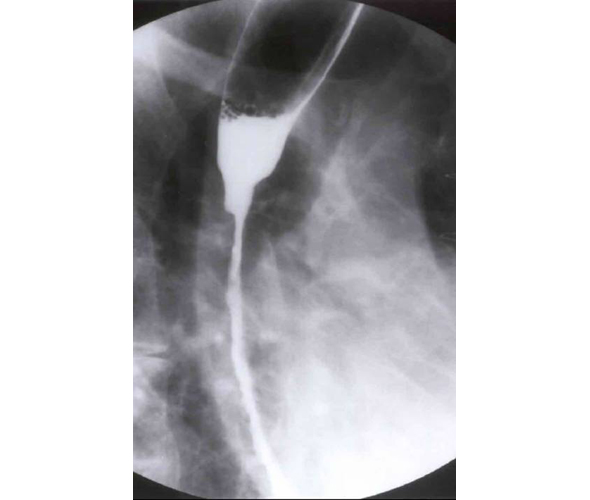1.
Discuss Acids vs. Bases and types of injuries they cause in caustic ingestions. What are the different types of caustic ingestions.
2.
List the typical signs and symptoms of caustic ingestion.
3.
Describe the staging of esophageal burns in caustic ingestion.
4.
Discuss the role of esophageal endoscopy in caustic ingestion. Why the controversy? Discuss the timing of endoscopy after a caustic ingestion.
5.
You are called to the ER for evaluation of a 2-year-old who has recently ingested ½ bottle of Drano. She is in no respiratory distress, but is crying and drooling. What do you do?
6.
Click edit button to change this text.
7.
Role of neutralizing agents in caustic ingestion.
8.
Discuss timing and technique of placing a NG tube after caustic injury.
9.
A 3-year-old is seen in the laundry room taking a few sips of household bleach. He immediately coughs and spits it out. In the ED, he is in no distress and appears comfortable. There are no visible injuries in the mouth or oropharynx. What is the next step in management? Should this patient have an upper aerodigestive tract endoscopy in the OR?
10.
Should we perform endoscopies on asymptomatic patients with caustic ingestion?
Reference(s):
Bosnali, O., Moralioglu, S., Celayir, A., & Pektas, O. Z. (2017). Is rigid endoscopy necessary with childhood corrosive ingestion? a retrospective comparative analysis of 458 cases. Diseases of the Esophagus : Official Journal of the International Society for Diseases of the Esophagus, 30(3), 1–7.
11.
Present the pharmacologic treatment of esophageal burns after caustic ingestion. Discuss the role of antibiotics, antireflux medications, and steroids. Make sure to discuss in terms of the different stages of injury.
Reference(s):
Usta, M., Erkan, T., Cokugras, F. C., Urganci, N., Onal, Z., Gulcan, M., & Kutlu, T. (2014). High doses of methylprednisolone in the management of caustic esophageal burns. Pediatrics, 133(6), E1518-24.
12.
List the potential complications of caustic ingestions.
13.
Sixteen months after a caustic ingestion with lye in a suicide attempt, a 16-year-old girl is G tube dependent and unable to swallow by mouth. She has undergone several esophageal dilations, with no lasting improvement in her symptoms. She has a barium esophagram which is seen here. Discuss options for her management at this point.
14.
Describe different techniques for dilation of strictures caused by caustic injury to the esophagus.
15.
What are strategies for prevention of caustic ingestions in children? What government policies are in place to help prevent caustic ingestions in children?
16.
Discuss the effects of timing and concentrations of caustic agents.
Reference(s):
Mattos, G. M., Lopes, D. D., Mamede, R. C. M., Ricz, H., Mello-Filho, F. V, & Neto, J. B. (2006). Effects of time of contact and concentration of caustic agent on generation of injuries. The Laryngoscope, 116(3), 456–460.
17.
What is the role of intralesional steroids in esophageal strictures?
Reference(s):
Nijhawan, S., Udawat, H. P., & Nagar, P. (2016). Aggressive bougie dilatation and intralesional steroids is effective in refractory benign esophageal strictures secondary to corrosive ingestion. Diseases of the Esophagus : Official Journal of the International Society for Diseases of the Esophagus, 29(8), 1027–1031.
18.
Discuss the management of inhalation injury.
Reference(s):
Badulak, J. H., Schurr, M., Sauaia, A., Ivashchenko, A., & Peltz, E. (2018). Defining the criteria for intubation of the patient with thermal burns. Burns : Journal of the International Society for Burn Injuries, 44(3), 531–538.


